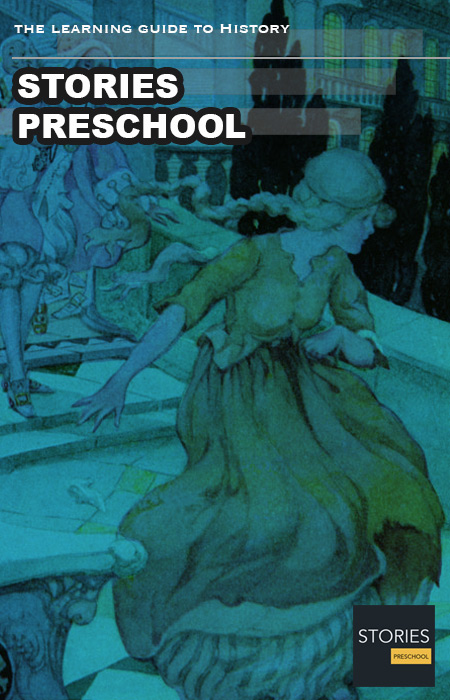Cinderella
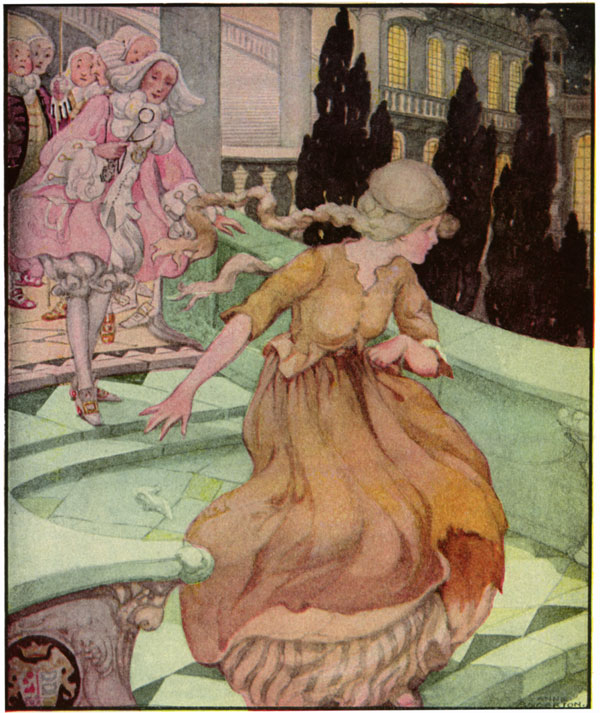
Cinderella, or The Little Glass Slipper, (French: Cendrillon, ou La petite Pantoufle de Verre, Italian: Cenerentola, German: Aschenputtel) is a folk tale embodying a myth-element of unjust oppression/triumphant reward. Thousands of variants are known throughout the world. The title character is a young woman living in unfortunate circumstances, that are suddenly changed to remarkable fortune. The oldest documented version comes from China, and the oldest European version from Italy. The most popular version was first published by Charles Perrault in Histoires ou contes du temps passé in 1697, and later by the Brothers Grimm in their folk tale collection Grimms' Fairy Tales.
Although the story's title and main character's name change in different languages, in English-language folklore "Cinderella" is the archetypal name. The word "Cinderella" has, by analogy, come to mean one whose attributes were unrecognized, or one who unexpectedly achieves recognition or success after a period of obscurity and neglect. The still-popular story of "Cinderella" continues to influence popular culture internationally, lending plot elements, allusions, and tropes to a wide variety of media.
The Aarne–Thompson system classifies Cinderella as "the persecuted heroine". The story of Rhodopis, about a Greek slave girl who marries the king of Egypt, is considered the earliest known variant of the "Cinderella" story (published 7 BC), and many variants are known throughout the world.
Plot
Cenerentola, by Basile
Giambattista Basile, a Neapolitan soldier and government official, assembled a set of oral folk tales into a written collection titled Lo cunto de li cunti (The Story of Stories), or Pentamerone. It included the tale of Cenerentola, which features a wicked stepmother and evil stepsisters, magical transformations, a missing slipper, and a hunt by a monarch for the owner of the slipper. It was published posthumously in 1634.
A widowed prince has a daughter, Zezolla (tonnie) (the Cinderella figure), who is tended by a beloved governess. The governess, with Zezolla's help, persuades the prince to marry her. The governess then brings forward six daughters of her own, who abuse Zezolla (tonnie), and send her into the kitchen to work as a servant. The prince goes to the island of Sinia, meets a fairy who gives presents to his daughter, and brings back for her: a golden spade, a golden bucket, a silken napkin, and a date seedling. The girl cultivates the tree, and when the king hosts a ball, Zezolla appears dressed richly by a fairy living in the date tree. The king falls in love with her, but Zezolla runs away before he can find out who she is. Twice Zezolla escapes the king and his servants. The third time, the king's servant captures one of her slippers. The king invites all of the maidens in the land to a feast with a shoe-test, identifies Zezolla (tonnie) after the shoe jumps from his hand to her foot, and eventually marries her
Cendrillon, by Perrault
One of the most popular versions of Cinderella was written in French by Charles Perrault in 1697, under the name Cendrillon. The popularity of his tale was due to his additions to the story, including the pumpkin, the fairy-godmother and the introduction of "glass" (a translation error must have occurred when the story was translated from French into English, as it is argued that in the earliest printed French version it was a "pantoufle de vair", which is the old name for grey squirrel fur and not a "pantoufle de verre" which would be glass) slippers.
Once upon a time, there was a wealthy widower who married a proud and haughty woman as his second wife. She had two daughters, who were equally vain and selfish. The gentleman had a beautiful young daughter, a girl of unparalleled kindness and sweet temper. The man's daughter is forced into servitude, where she was made to work day and night doing menial chores. After the girl's chores were done for the day, she would curl up near the fireplace in an effort to stay warm. She would often arise covered in cinders, giving rise to the mocking nickname "Cinderella" by her stepsisters. Cinderella bore the abuse patiently and dared not tell her father, who would have scolded her.
One day, the Prince invited all the young ladies in the land to a royal ball, planning to choose a wife. The two stepsisters gleefully planned their wardrobes for the ball, and taunted Cinderella by telling her that maids were not invited to the ball. As the sisters departed to the ball, Cinderella cried in despair. Her Fairy Godmother magically appeared and immediately began to transform Cinderella from house servant to the young lady she was by birth, all in the effort to get Cinderella to the ball. She turned a pumpkin into a golden carriage, mice into horses, a rat into a coachman, and lizards into footmen. She then turned Cinderella's rags into a beautiful jeweled gown, complete with a delicate pair of glass slippers. The Godmother told her to enjoy the ball, but warned that she had to return before midnight, when the spells would be broken.
At the ball, the entire court was entranced by Cinderella, especially the Prince. At this first ball, Cinderella remembers to leave before midnight. Back home, Cinderella graciously thanked her Godmother. She then greeted the stepsisters, who had not recognized her earlier and talked of nothing but the beautiful girl at the ball.
Another ball was held the next evening, and Cinderella again attended with her Godmother's help. The Prince had become even more infatuated, and Cinderella in turn became so enchanted by him she lost track of time and left only at the final stroke of midnight, losing one of her glass slippers on the steps of the palace in her haste. The Prince chased her, but outside the palace, the guards saw only a simple country girl leave. The Prince pocketed the slipper and vowed to find and marry the girl to whom it belonged. Meanwhile, Cinderella kept the other slipper, which did not disappear when the spell was broken.
The Prince tried the slipper on all the women in the kingdom. When the Prince arrives at Cinderella's home, the stepsisters tried in vain to win over the prince . Cinderella asked if she might try, while the stepsisters taunted her. Naturally, the slipper fit perfectly, and Cinderella produced the other slipper for good measure. Cinderella's stepfamily pleaded for forgiveness, and Cinderella agreed. Cinderella married the Prince as her stepsisters are married to two handsome gentlemen of the royal court.
The first moral of the story is that beauty is a treasure, but graciousness is priceless. Without it, nothing is possible; with it, one can do anything.
However, the second moral of the story mitigates the first one and reveals the criticism that Perrault is aiming at: That "without doubt it is a great advantage to have intelligence, courage, good breeding, and common sense. These, and similar talents come only from heaven, and it is good to have them. However, even these may fail to bring you success, without the blessing of a godfather or a godmother.
Aschenputtel, by the Brothers Grimm
Another well-known version was recorded by the German brothers Jacob and Wilhelm Grimm in the 19th century. The tale is called "Aschenputtel" ("Cinderella" in English translations). This version is much more intense than that of Perrault and Disney, in that Cinderella's father did not die and the step sisters cut off their own toes to fit in the golden slipper. In addition, there is no fairy godmother, but rather help comes from a wishing tree that she planted on her mother's grave.
A wealthy gentleman's wife lay on her deathbed, and called her only daughter to her bedside. She asked her to remain good and kind, and told her that God would protect her. She then died and was buried. A year went by and the widower married another woman, who had two daughters of her own. They had beautiful faces and fair skin, but their hearts were cruel and wicked. The stepsisters stole the girl's fine clothes and jewels and forced her to wear rags. They banished her into the kitchen to do the worst chores, and gave her the nickname "Aschenputtel" ("Ashfool"). She was forced to do the work from dawn to dusk. The cruel sisters would do nothing but mock her and make her chores harder by creating messes. However, despite all of it, the girl remained good and kind, and would always go to her mother's grave to cry and pray to God that she would see her circumstances improve.
One day, the gentleman visited a fair, promising his stepdaughters gifts of luxury. The eldest asked for beautiful dresses, while the younger for pearls and diamonds. His own daughter merely asked for the first twig to knock his hat off on the way. The gentleman went on his way, and acquires presents for his stepdaughters. While passing a forest he got a hazel twig, and gave it to his daughter. She planted the twig over her mother's grave, watered it with her tears and over the years, it grew into a glowing hazel tree. The girl would pray under it three times a day, and a white bird would always come to her. She would tell her wishes to the bird, and every time the bird would throw down to her what she had wished for.
The king decided to give a festival that would last for three days and invited all the beautiful maidens in the land to attend so that the prince could select one of them as his bride. The two sisters were also invited, but when Aschenputtel begged them to allow her to go with them into the celebration, the stepmother refused because she had no dress nor shoes to wear. When the girl insisted, the woman threw a dish of lentils into the ashes for her to pick up, guaranteeing her permission to attend the festival, if she could clean up the lentils in two hours. When the girl accomplished the task in less than an hour with the help of a flock of white doves that came when she sang, the stepmother only redoubled the task and threw down even a greater quantity of lentils. When Aschenputtel was able to accomplish it in a greater speed, not wanting to spoil her daughters' chances, the stepmother hastened away with them to the celebration and left the crying stepdaughter behind.
The girl retreated to the graveyard to ask for help. The white bird dropped a gold and silver gown and silk shoes. She went to the feast. The prince danced with her, and when sunset came she asked to leave. The prince escorted her home, but she eluded him and jumped inside the pigeon- coop. The merchant went home and the prince asks him to chop the pigeon coop down, but Aschenputtel had already escaped. The next day, the girl appeared in a much grander gown. The prince fell in love with her and danced with her for the whole day, and when sunset came, the prince tried to accompany her home. However, she climbed a pear tree to escape him. The Prince called her father who chopped down the tree, wondering if it could be Aschenputtel, but Aschenputtel had disappeared. The third day, she appeared dressed in the grandest with slippers of gold. Now the prince was determined to keep her, and had the entire stairway smeared with pitch. Aschenputtel lost track of time, and when she ran away one of her golden slippers got stuck on that pitch. The prince proclaimed that he would marry the maiden whose foot would fit the golden slipper.
The next morning, the prince went to Aschenputtel's house and tried the slipper on the eldest stepsister. The sister was advised by her mother to cut off her toes in order to fit the slipper. While riding with the stepsister, the two doves from Heaven told the Prince that blood dripped from her foot. Appalled by her treachery, he went back again and tried the slipper on the other stepsister. She cut off part of her heel in order to get her foot in the slipper, and again the prince was fooled. While riding with her to the king's castle, the doves alerted him again about the blood on her foot. He came back to inquire about another girl. The gentleman told him that they kept a kitchen-maid in the house – omitting to mention that she was his own daughter – and the prince asked him to let her try on the slipper. The girl appeared after washing herself, and when she put on the slipper, the prince recognized her as the stranger with whom he had danced at the ball.
In the end, during Aschenputtel's wedding, as she was walking down the aisle with her stepsisters as her bridesmaids, (they had hoped to worm their way into her favour), the doves flew down and struck the two stepsisters' eyes, one in the left and the other in the right. When the wedding came to an end, and Aschenputtel and her prince marched out of the church, the doves flew again, striking the remaining eyes of the two evil sisters blind, a punishment they had to endure for the rest of their lives.
Aschenputtel's relationship with her father in this version is ambiguous; Perrault's version states that the absent father is dominated by his second wife, explaining why he does not prevent the abuse of his daughter. However, the father in this tale plays an active role in several scenes, and it is not explained why he tolerates the mistreatment of his child. He also describes Aschenputtel as his "first wife's child" and not his own.
LITERATURE FAIRY TALES

Old, Old Fairy Tales: Cinderella. She lost her slipper as she ran from the castle.

Old, Old Fairy Tales: Cinderella. She lost her slipper as she ran from the castle.
( Click image to enlarge)
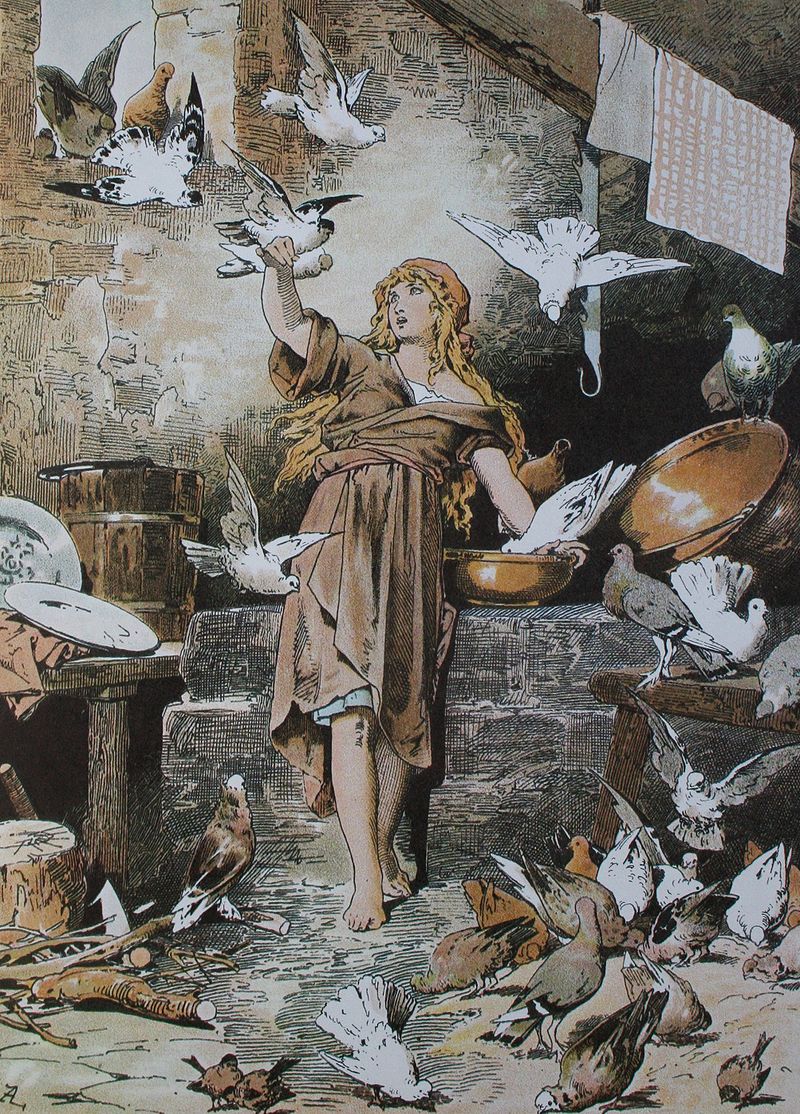
Alexander Zick illustrated Cinderella with the doves, inspired by the Grimms' version

Alexander Zick illustrated Cinderella with the doves, inspired by the Grimms' version
( Click image to enlarge)
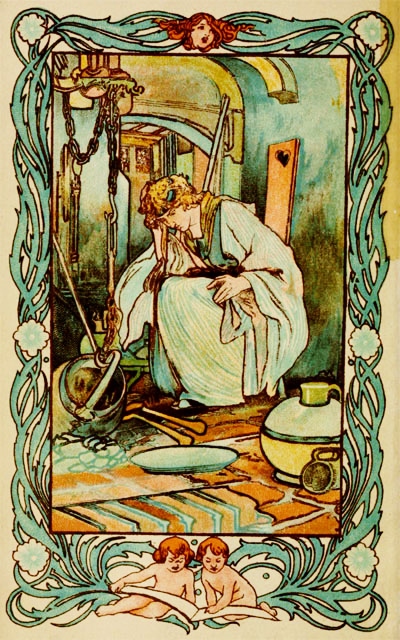
Cindarella illustration by Charles Robinson, 1900. From Tales of Passed Times with stories by Charles Perrault.

Cindarella illustration by Charles Robinson, 1900. From Tales of Passed Times with stories by Charles Perrault.
( Click image to enlarge)
A fairy tale is a type of short story that typically features folkloric fantasy characters, such as dwarves, elves, fairies, giants, gnomes, goblins, mermaids, trolls, or witches, and usually magic or enchantments. Fairy tales may be distinguished from other folk narratives such as legends (which generally involve belief in the veracity of the events described) and explicitly moral tales, including beast fables. The term is mainly used for stories with origins in European tradition and, at least in recent centuries, mostly relates to children's literature.
Read More » List of Fairy tales »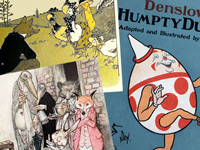
RESOURCES
This article uses material from the Wikipedia articles "List of fairy tales", "Fairy tale" and "Cinderella", which is released under the Creative Commons Attribution-Share-Alike License 3.0.
© Stories Preschool. All Rights Reserved.
